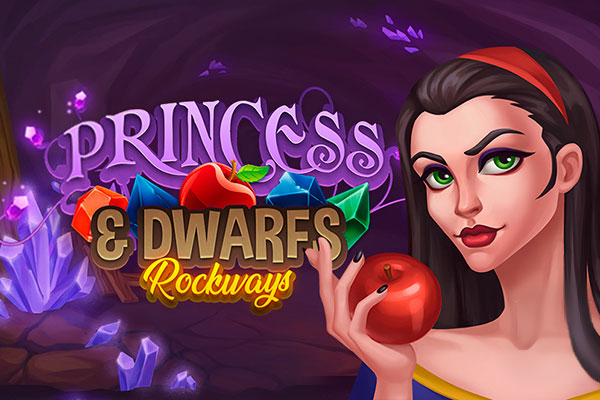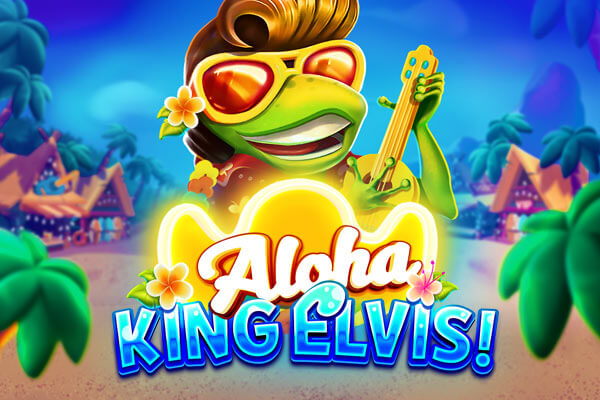Discovering the Kea Parrot: The Mischievous Mountain Clown of New Zealand (and its Surprising NIC!)
The Kea ( Nestor notabilis) is more than just a parrot; it's a symbol of the rugged, untamed beauty of New Zealand's Southern Alps. Known for their intelligence, curiosity, and a penchant for mischief, these alpine parrots have captured the hearts (and sometimes frustrated the patience) of locals and visitors alike. But beyond their playful antics, the Kea harbors fascinating secrets, including a surprisingly high nictitating membrane index (NIC), which we'll explore in detail. This article delves into the life, behavior, conservation, and unique characteristics of the Kea, providing a comprehensive overview of this remarkable bird.
The Kea: A Brief Introduction to New Zealand's Alpine Parrot
The Kea is endemic to the South Island of New Zealand, primarily inhabiting the alpine and subalpine regions. Their olive-green plumage provides excellent camouflage against the mountainous terrain, while their bright orange underwings offer a flash of color during flight. Kea are large parrots, measuring approximately 48 cm (19 inches) in length and weighing between 0.8 to 1.3 kg (1.8 to 2.9 lbs). They are highly intelligent and adaptable, enabling them to thrive in a challenging environment.
Understanding the Nictitating Membrane Index (NIC) in Kea
The nictitating membrane, also known as the third eyelid, is a translucent or transparent membrane present in many animals, including birds, reptiles, and some mammals. It's located inside the lower eyelid and can be drawn across the eye for protection and lubrication. The Nictitating Membrane Index (NIC) is a measure of the extent to which this membrane covers the eye. A higher NIC indicates a greater degree of coverage.
So, why does the Kea have a high NIC? Here's what scientific observations tell us:
- Protection from the Elements: The harsh alpine environment presents numerous challenges, including strong winds, snow, ice, and intense UV radiation. The nictitating membrane acts as a physical barrier, shielding the Kea's eyes from these elements.
- Dust and Debris: Kea are often seen foraging on the ground, rummaging through rocks and vegetation. The nictitating membrane helps to remove dust and debris from the eye surface, maintaining clear vision.
- Aggression and Competition: Kea are known to engage in aggressive interactions with each other, particularly during feeding. The nictitating membrane may offer some protection against scratches and pecks to the eye.
- During Flight: Kea are powerful flyers, capable of navigating through turbulent mountain air. The nictitating membrane likely helps to keep the eyes moist and protected during flight.
- UV Radiation Shielding: Research is ongoing but suggests the membrane may offer some protection against the high UV radiation levels found at high altitudes.
While precise quantitative data on Kea NIC compared to other bird species is limited, observations consistently show their nictitating membrane is readily deployed and provides substantial coverage, suggesting a relatively high index.
Kea Behavior: Intelligence, Curiosity, and Mischief
Kea are renowned for their intelligence and problem-solving abilities. They have been observed using tools, such as sticks, to retrieve food and manipulating complex objects to access hidden rewards. Their curiosity often leads them into trouble, as they are known to investigate and even dismantle anything that catches their attention.
Some examples of Kea mischief include:
- Stripping rubber seals from cars: This is perhaps the most well-known example of Kea mischief, causing considerable damage to vehicles.
- Unzipping backpacks and stealing food: Kea are opportunistic feeders and will take advantage of any unattended food source.
- Removing road cones: Kea seem to find amusement in disrupting human activities.
- Damaging ski equipment: Skiers and snowboarders often find their equipment targeted by curious Kea.
- Tampering with solar panels: This creates problems with local community energy production.
This behavior is not simply random destruction; it reflects the Kea's intelligence and their drive to explore and understand their environment. Their problem-solving skills are crucial for survival in the harsh alpine environment where food resources can be scarce and unpredictable.
Kea Diet and Foraging Strategies
Kea are omnivorous, with a diet that varies depending on the season and availability of food. They feed on a wide range of items, including:
- Roots and shoots: These are particularly important during the winter months when other food sources are scarce.
- Berries and fruits: Kea enjoy a variety of native berries and fruits when they are in season.
- Insects and larvae: These provide a valuable source of protein.
- Carrion: Kea will scavenge on dead animals, helping to keep the environment clean.
- Introduced foods: Sadly, Kea have adapted to exploiting human-provided food sources, such as garbage and scraps, which can be detrimental to their health and well-being.
Kea employ a variety of foraging strategies, including:
- Digging for roots and larvae: Their strong beaks and claws are well-suited for this task.
- Searching for food in trees and shrubs: They are agile climbers and can access food sources that are unavailable to other animals.
- Scavenging on carrion: They have a keen sense of smell and can locate carcasses from a distance.
- Exploiting human-provided food sources: This can be problematic, as it can lead to nutritional imbalances and dependence on humans.
Kea Conservation Status and Threats
The Kea is currently classified as Nationally Endangered in New Zealand. Their population is estimated to be between 3,000 and 7,000 individuals. Kea face a number of threats, including:
- Predation by introduced mammals: Stoats, cats, and possums prey on Kea eggs and chicks, significantly reducing their survival rates.
- Human persecution: Historically, Kea were persecuted by farmers who believed they were killing sheep. Although this is no longer a widespread practice, illegal shooting still occurs.
- Lead poisoning: Kea are susceptible to lead poisoning from ingesting lead-based materials, such as nails and flashings found in buildings.
- Habitat loss: While Kea inhabit a relatively intact alpine environment, habitat degradation from introduced plants and grazing animals can impact their food sources.
- Climate change: Changes in temperature and precipitation patterns may alter the availability of food resources and increase the risk of extreme weather events.
Population Statistics and Trends
| Statistic | Value | Source |
|---|---|---|
| Estimated Population Size | 3,000 - 7,000 | DOC (NZ) |
| Conservation Status | Nationally Endangered | DOC (NZ) |
| Annual Population Decline Rate | Variable, locally significant | Various Research |
Conservation Efforts
Various conservation efforts are underway to protect Kea populations, including:
- Predator control: Trapping and poisoning programs target introduced predators, such as stoats, cats, and possums.
- Lead abatement: Removing lead-based materials from buildings and providing alternative food sources helps to reduce the risk of lead poisoning.
- Public education: Raising awareness about the importance of Kea conservation helps to reduce human-caused threats.
- Research and monitoring: Ongoing research and monitoring programs provide valuable information about Kea populations and their threats, informing conservation strategies.
- Kea translocations: Moving Kea to safe environments and islands free of predators, helps to create new colonies.
How You Can Help Kea Conservation
You can contribute to Kea conservation efforts by:
- Supporting conservation organizations: Donate to organizations that are working to protect Kea populations.
- Reporting Kea sightings: Report any Kea sightings to the Department of Conservation (DOC) to help monitor their distribution.
- Avoiding feeding Kea: Feeding Kea can lead to dependence on humans and increase the risk of health problems.
- Protecting your belongings: Keep your belongings secure when in Kea habitat to prevent them from being damaged or stolen.
- Educating others: Share information about Kea conservation with your friends and family.
The Future of the Kea: A Call to Action
The future of the Kea depends on our collective efforts to address the threats they face. By supporting conservation initiatives, reducing human-caused threats, and promoting public awareness, we can help ensure that these intelligent and mischievous parrots continue to thrive in the Southern Alps of New Zealand for generations to come.
FAQ About Kea Parrots
Q: What is a Kea?
A: The Kea (Nestor notabilis) is a large, intelligent parrot endemic to the South Island of New Zealand. They are known for their olive-green plumage, bright orange underwings, and mischievous behavior.
Q: Where do Kea live?
A: Kea primarily inhabit the alpine and subalpine regions of the South Island of New Zealand.
Q: What do Kea eat?
A: Kea are omnivorous, feeding on a variety of roots, shoots, berries, fruits, insects, larvae, and carrion.
Q: Are Kea endangered?
A: Yes, Kea are classified as Nationally Endangered in New Zealand.
Q: Why are Kea endangered?
A: Kea face a number of threats, including predation by introduced mammals, human persecution, lead poisoning, habitat loss, and climate change.
Q: What is being done to protect Kea?
A: Conservation efforts include predator control, lead abatement, public education, research and monitoring, and Kea translocations.
Q: What can I do to help Kea conservation?
A: You can support conservation organizations, report Kea sightings, avoid feeding Kea, protect your belongings, and educate others about Kea conservation.
Q: What is the nictitating membrane and why is it important for Kea? A: The nictitating membrane is a third eyelid that helps protect and lubricate the eye. For Kea, it's especially important due to the harsh alpine environment, protecting them from UV radiation, dust, snow, and potential injuries during aggressive interactions.
Q: Why do Kea damage cars?
A: Kea are naturally curious and intelligent birds that investigate their environment using their beaks. They are not intentionally trying to cause damage, but their curiosity can lead them to dismantle objects, including cars. They may be attracted to rubber or other materials.
Q: Are Kea dangerous to humans?
A: Kea are generally not dangerous to humans, but they can be assertive and may attempt to steal food or belongings. It's important to keep your distance and avoid feeding them.
Q: How intelligent are Kea?
A: Kea are considered to be one of the most intelligent bird species in the world. They have been observed using tools, solving complex problems, and exhibiting social learning.
Q: Can I keep a Kea as a pet?
A: No, it is illegal to keep a Kea as a pet in New Zealand. Kea are a protected species and require specialized care.
By understanding the Kea and its unique adaptations, including its nictitating membrane index (NIC) and its relationship with the alpine environment, we can better appreciate the importance of protecting these remarkable birds and their fragile ecosystem. Conservation efforts are crucial, and by working together, we can ensure the survival of the Kea for future generations.
Slots and Games

{{Games-kaz}}

Wilds of Fortune

Aztec Sun Hold and Win

Shake shake Leprechaun

The Princess & Dwarfs

Aloha King Elvis

Aztec Magic Megaways

Miss Cherry Fruits

Shake Shake Money Tree

Shark Spin